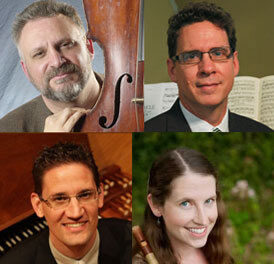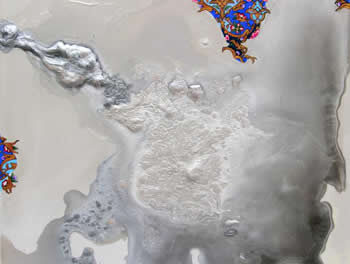Within the 2016-17 offerings of Carolina Performing Arts (CPA), they are presenting this season, after two years of planning and preparation, a series of ten artists – instrumentalists, singers, theater, dance, under the rubric, “Sacred/Secular: A Sufi Journey 2016-17.” Fourteen informative events surround the basic ten programs. In addition, nearly two dozen UNC classes are incorporating these events into the course syllabus. When CPA began the project, little did they know how timely this focus would be to portray through the arts a clearer understanding about the practice of Islam and about Muslim communities.
The “Sufi Journey” series opened on Friday, September 9 with group of unusually sensitive Iranian instrumental virtuosi led by Hossein Alizadeh, a person held in high regard in Iran for his performances, new interpretations of classical Persian music, his own compositions, research, and teaching.
In this concert, Alizadeh played a tār, a fretted, six-stringed, long-necked lute of Iran and the Caucasus, whose double-pear-shaped body is covered with skin. In a solo role he functioned as leader of the ensemble. Hossein Behroozinia performed on a barbat (oud). Besides Behroozinia’s deftly done imitative answers in improvisation, the lute carried the bass function in the group. Percussionist Behnam Samani alternated between a daf, the tombak, and a cube drum with five playable areas. Samani’s fingers beat so very quickly on the drum that they were a blur to the eyes. The percussion sounds furnished a delicate addition to the texture of the ensemble’s sound as a whole with well-placed accented beats in what seemed to be in indeterminate places (though they may have been well-planned).
The audience had no formal printed program, which left a person free to absorb deeply the sounds, one’s inner impressions, and to notice various feelings in the body – to drift into the flow of the music. It was clear that, since we are all different individuals, each person’s experience of this music perhaps was unique; equally as clear, the audience found a unity with each other, the music, and performers.
The first work lasted an hour. Alizadeh plucked the opening notes of a descending half-step so stridently on his tār that I was startled. As the notes unfolded among the players, they portrayed to me a sense of conflict and darkness, through use, I think, of a certain mode to aid that feeling. In contrast, he treated his ornamentation figures with the utmost exquisite sensitivity. Ah, what beauty! The hour was filled with many repetitions of a gradual crescendo followed by a gradual decrescendo, as if the music itself were inhaling and exhaling. The background scrim was filled with a stark design suggestive of a peacock spreading its tail feathers, though here the shape of red tears substituted for the feathers, prominently illuminated on the back scrim. At the end of this hour, the audience rose as one in loud acclaim of their pleasure in this experience.
For the second half of the evening, Saba Alizahdeh, grown son of Hossein Alizahdeh, joined the other three players. The son performed on the kamancheh, an upright four-stringed instrument with a long unfretted fingerboard that meets a small, spherical, wooden body, covered with skin. Held upright and sitting on a spike (hence the alternate name, spike fiddle), the flexible bow is held underhand as in bowing a western gamba. As the player played, he rotated the instrument a little to bring a string into playing range rather than moving the arm. With a position more like that of a cellist, the instrument sounds more like a rich-sounding violin. The younger Alizahdeh played with a small, sweet vibrato and spun out touching melodies. His sound added another dimension to the group.
For the second half of the evening, the group performed three works of about fifteen minutes each, and a fourth for an encore. The same design in the second half, colored yellow, seemed to reflect a sense of resolution both in the backdrop and in the choice of brighter modes, one equivalent to the western Ionian mode (major scale) – a different type of listening/feeling experience. All evening the group engaged in fascinating interplays of improvisation from each instrumentalist, combined with imitative responses back and forth, as they spun their way with intuitive connections and a few cues through the set forms of an improvised work, which they infused with their spiritual breath. For them, music’s most important dimension lies in this higher realm.
After quite a few people had left the auditorium after the encore, father and son Alizadeh returned to the stage with microphones. Saba serves as translator from Parsi to English for his father. The elder Alizadeh, who focuses so much on the art of improvisation wanted us to know some things: (I quote/somewhat edit a section of his remarks, delivered in Parsi, translated by Saba Alizadeh.)
“Improvisation is like life itself since it is never the same from one moment to the next. With each concert we cannot predict the quality. Backstage we performers feel the breath of the audience. It excited us to get on the stage tonight. We couldn’t wait, because of the vibes we felt from the audience. If we play fine, it’s your fault. If the audience claps ‘in the wrong place’ [which it did at one point in the second half], we accept that as the expressed wish of the audience. Whenever we perform together on stage, the audience and we take a journey together. It doesn’t matter. We take a journey together. We reach a purpose together. The path is the most important. People take a journey together. Tonight the audience directed that journey at one point. It is so wonderful. This is such an extraordinary feeling to experience. I paint this house [with my feelings]. In this performance of about two hours, the best is whatever happened in those moments. My latest work [composition] is about you, [the audience], [in the] now. I can speak best through music.”
Deeply moved, we reluctantly left the auditorium savoring this magnificent encounter with the Alizadehs and their group.












